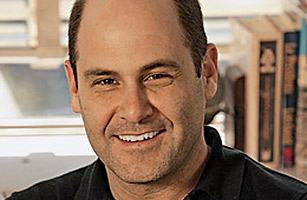
Matthew Weiner, the creator of the award-winning TV series Mad Men, talks to Deirdre van Dyk about how today reflects the 1960s, the golden age of design and time travel
What is Mad Men about?
It's a show about an advertising man, Don Draper, and his colleagues and family, set in 1960.
What intrigued you about that particular time?
Well, one of the first books I read all the way through was The Catcher in the Rye. Then I read the rest of J.D. Salinger and started on John Cheever —It spoke to me. I feel that we've relegated this period to being this idyllic Leave It to Beaver era. The '60s had such a deep impact on our lives today. It was a golden moment in the U.S. and one of the few times in history when things really changed drastically. I think there's a lot of parity with right now.
Can you give any specific examples?
Well, there was an election—Kennedy vs. Nixon—decided by just 120,000 votes. And like then, the world is changing rapidly. People are concerned about the end of the world, about the planet. And in the early '60s, there were a bunch of books that are still relevant now: The Feminine Mystique by Betty Friedan, Unsafe at Any Speed by Ralph Nader, Silent Spring by Rachel Carson.
What about design—any similarities to contemporary sensibilities?
There were so many new materials—the color pigments and new plastics, new technology. A cool telephone was just as important then as it is now. The Princess phone came out. Today we have cell phones; they're all basically the same, but people want something that looks good, not just a phone that has a good signal.
Why do you think it was such a golden age for design?
The economy was changing from a production-oriented to a consumer-oriented economy. Design was not considered some intellectual, distant thing. Things had to be beautiful. And new materials had to be used in an elegant way.
Do you have any favorite items from the 1960s?
The 1960 Cadillac. The Hamilton Ventura may be the most beautiful watch ever made. And the architecture—the Seagram Building and Lever House went up within a few years of each other.
The show feels so real. How do you create that time travel?
Part of the reason it doesn't just feel like some glamorous, sterile universe is that thanks to our production designer, Dan Bishop, not everything is from 1960. Your temptation when doing period is to get everything from that year—desks from that year, actors' clothes are what was in Vogue that year. But regular people couldn't buy clothes that were in Vogue. They had to buy them two years later. It's like now. People walk around dressed out of the '80s and the '90s. All that stuff exists at once.
I hear you're very particular about accuracy.
Some of it's about the actors. You want them to be in that world and to trust it. Look at a picture. See what the size of a glass looked like—it's about half the scale of what a glass looks like now. We had a scene with a bowl of fruit, and the fruit was just gigantic. I wanted smaller fruit, like they had then. And it sort of got passed around the set that I was the biggest lunatic in the entire world.
I also hear that you didn't want actors who had perfect smiles with capped teeth.
And I didn't want women to have these yoga arms. I wanted them to look more womanly.
Do you think the show will have an effect on design?
If anything is rediscovered because of the show, that's fantastic. If we have a message to anybody, it's stop tearing stuff down. Because you will miss it. It's amazing, it's valuable, and there is nothing new that is going to replace it.